The Prussian army, after being trounced at Jena, was absorbed into the French army for Napoleon's invasion of Russia. When Napoleon returned in 1813, he faced a Prussia in open revolt. The Prussian army switched sides, fought the Wars of Liberation against France in 1813-4, and presented the coup de grace at Ligny and Waterloo in 1815.
The Prussian Infantry during this period was made up of four elements. The line infantry (regiments 1-12) were probably the best in overall quality, and certainly the best equipped. The reserve infantry (regiments 13-24) were initially clothed in whatever uniforms were available. By Waterloo, when they were incorporated into the line, most reserve regiments had adopted the uniforms of the line. The Landwehr were the Prussian militia, and were, at the outset, possibly the worst equipped troops in all of Europe. By Waterloo, some degree of uniformity was evident in these units as well. Volunteer Jager provided more muscle at the skirmish line.
Four sets are available in plastic for the Prussian infantry of this period: Revell Prussian Line Infantry, HaT Prussian Reserve Infantry, HaT Prussian Volunteer Jager, and Airfix Prussian Landwehr.
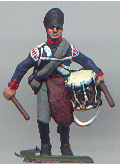 |
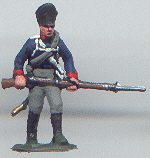 |
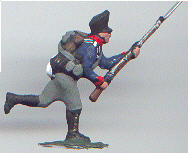 |
These Revell figures are painted
as line infantry of the 6th (1st W. Prussian) Regiment. The
first two battalions of each regiment were line infantry.
 |
 |
These Revell figures are painted as fusiliers of the 6th (1st W. Prussian) Regiment. One fusilier battalion was attached to each regiment. The only real difference in painting fusiliers is that their leather straps are all black. Otherwise they are uniformed the same as line infantry of their regiment.
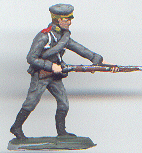 |
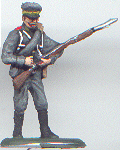 |
 |
 |
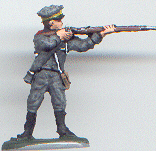 |
 |
 |
 |
These are men of the 12th (4th Brandenburg)
Reserve Infantry in 1814. The provisional uniform was a very modern
looking light gray with facing colors corresponding to the regiment's home
province. These really look more like troops from the Great War than
from Napoleon's day!
 |
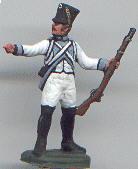 |
This is an example of one of the
more varied uniforms of the reserve regiments. The 28th Infantry
Regiment was formed by infantry from Berg. The first two battalions
were line infantry and the third battalion grenadiers. These men
had been fighting for years in the French service, and retained their French
style uniforms. They wore these uniforms at Waterloo.
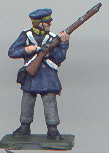 |
 |
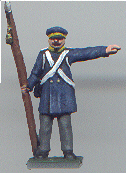 |
 |
 |
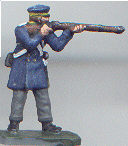 |
These are the 2nd Westphalian Landwehr. The figures look great in every way. This was a rush paint job!
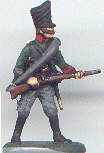 |
 |
 |
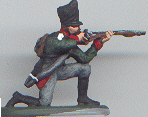 |
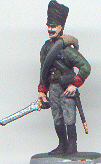 |
 |
 |
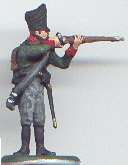 |
The HaT set is one of the very best in 1/72 plastic. The figures are depicted in campaign dress, with gray trousers and black shako covers. Facial detail, poses, equipment, uniforms, and sculpting are all fantastic. These figures are painted as the jager company of the 6th (1st W. Prussian) Infantry Regiment.